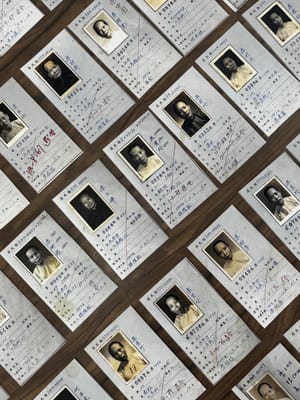THE MODERN WOMAN was a term that gained traction in Newfoundland in the 1890s, which brought about voting rights for women. This expression was later picked up by glamorous advertisements and magazine spreads in the 1920s; such women were characterised by their liberal dressing and views. During that time, Republican-era China also had its version of this woman. She was an independent career woman, politically motivated and lived in the city.
However, another kind of modern woman walked the streets of George Town. She wore a crisp white and black samfu, her hair neatly plaited or pinned in a bun. She took a vow of celibacy, rejecting marriage and the expectations of traditional womanhood. Her resistance was quieter, more enduring and far less photographed or celebrated. She was the majie.
The majie may not have fitted the image of modernity, but she embodied its deeper transformations. Through financial independence, migration and lifelong labour, she was both breadwinner and caregiver, sustaining families across borders through decades of uncertainty, war and independence.






